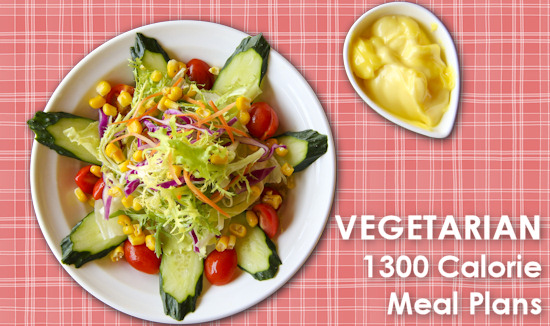My Fat, Your Fat, and Trans Fat
by Lisa Binkley
Fat, as every dieter knows, is the enemy. Fat is the cause of our spare tires, rounded waists, plump kids, and corroded arteries. Fat is the villain in the soap opera of weight control. Fat is the culprit in the whodunit of nutritional mysteries. People should eliminate all fat from their food to save their health.
Right? Well, no. Not quite. Fat, fatty acids, and lipids play important roles in an adequate diet. On a cellular level, membranes are comprised of phospholipids. Fatty acids function as transporters for vitamins across the walls of the gastrointestinal tract. The linings of the brain and nerves have high percentages of fatty acids and lipids in their make-up.
Fat is required to make hormones, which control processes as varied as blood pressure, clotting mechanisms, insulin secretion, and antibody production. Another of these compounds, called CCK, governs appetite. A sheet of subcutaneous fat insulates against cold and protects against heat, maintaining the narrow internal temperature at which the human body can function. Other layers cushion the internal organs from bruising and provide stability during strenuous activity. Indeed, fat supplies the energy to engage in those physically demanding pastimes. Two families of fatty acids, known as essential fatty acids or EFAs, are critical to health and can’t be synthesized or stored in the body. Linoleic acid and linolenic acid are required elements in the composition of eicosanoid hormones that regulate immune functions and the ability to fight off infections.
These EFAs are also known as the omega fatty acids and have been the object of numerous studies of the prevention of coronary artery disease. Fat, as one of the three nutritional sources, encompasses several subgroups. Monosaturated fats are the vegetable oils, canola and olive, which are liquid at room temperature but firm up when cooled in the refrigerator. They contain only a few hydrogen atoms. Polyunsaturated fats are commonly found in the other vegetable oils, like sunflower and corn, and remain liquid at most temperatures. These oils have a few more hydrogen atoms attached. Saturated fats are found in meat, dairy, and other animal products, as well as in coconut and palm oils. This fat, like lard, is solid at room temperature and has an extended shelf life.
During the early 1900’s, food researchers discovered how to attach hydrogen atoms to the chemical bonds in the unsaturated vegetable oils and improve their stability. After this process the resultant substance, widely used in processed foods, is called trans fat or hydrogenated fat. There are small amounts of naturally occurring trans fat in beef, pork, mutton, and dairy. Developed to insure food safety, trans fat has become the target of recent political and medical debate. Trans fat, as one researcher believes, is worse than regular saturated fats. In a few studies, consumption of large amounts of trans fat has a slight correlation with slightly lower HDL (good cholesterol) and slightly higher LDL (bad cholesterol) values. The result of fanatical crusading, astute use of the media, and extensive political lobbying, the federal government has passed legislation that will require food manufacturers to include trans fat percent on their nutrition labels by 2006.
This is popularly known as the Oreo law, since the cookies were named in a lawsuit against Nabisco for ‘criminal targeting of children’ when marketing the trans fat rich treat. Valid information is, of course, always helpful when making choices. However, this law simply propagates the myth that fat is the sole enemy. Forty years ago, based on the current knowledge of coronary disease, the medical establishment began encouraging patients to watch their cholesterol numbers, cut down on dietary intake of cholesterol and fatty foods, and prescribed the first generation of cholesterol-lowering drugs.
In subsequent studies, interesting but contradictory discoveries were made. Eating cholesterol doesn’t increase serum levels in most people. Study after study has failed to link eggs with heart disease or elevated cholesterol. Lowering cholesterol doesn’t reduce the incidence of coronary plaque, except in people under the age of 50. The biggest factors at all ages seem to be genetics and smoking. Switching to low-fat foods does not result in weight loss and, frustratingly enough, may have the opposite effect. How can this be? A huge industry has emerged from Americans efforts to follow the advice of experts. The experts, when confronted with the facts of a fatter population, shrug and assume that ‘cheating’ skews the statistics. But the grocery tape doesn’t lie. In spite of strict adherence to low fat diets, the nation is facing an obesity crisis. As mentioned previously, eating fat induces and produces a hormone called CCK, which tells the brain that the belly is full. Without this trigger, the diner may stop eating but will do so feeling unsatisfied. If not sated, an average person may snack and nibble until his need is met or she gives up.
A few days later, the pleasure of satisfaction after a piece of forbidden chocolate or dish of illicit ice cream is spoiled by guilt. The fat from these confections isn’t processed properly because the body mechanisms hoard the nutrient that has been in such short supply. Inadequate dietary intake leads to production of stored fat and is one of the reasons that binge dieting often results in weight gains at the cessation of the program. To lose weight, to control cholesterol, to manage arteriosclerosis, and to prevent obesity, diabetes, and coronary artery disease in most people, the most effective and proven technique is cutting calories while maintaining the 40-30-30 ratio of protein, fat, and carbohydrates. Calculate a reasonable and accurate estimation of the calories that are burned during an average day of typical activity. Eat less than that. Switching to monosaturated oils – canola and olive – will limit ingestion of trans fat, which may or may not be the Darth Vader of fat.
Do more cooking from scratch. Keeping it simple will allow an accurate appraisal of caloric and nutritional content. Commercially prepared entrees tend toward excessive calories, fat, and salt so use them sparingly. Since over one third of calories are now eaten ‘out’, find strategies to maintain that basic nutritional balance. Split that order of French fries and never Super size. Stick with a smaller sandwich or grilled chicken. Avoid those lovely biscuits and pastries; bakeries use shortening and a lot of it. Share the mud pie or cheesecake. A few ounces, far less than the slab that most places call a serving, will calm the craving. The question of fat hasn’t been settled. Too many contradictions remain for anyone to claim to know the one and only truth. In my opinion, the answer is, and always will be, moderation and common sense.
References Why Do We Need Fat? The Center for Young Women’s Health at Children’s Hospital Boston. Butter, Margarine and Trans Fat, University of Florida Trans Fat, Vanderbilt University Trans Fat Spells Double Trouble for Arteries, What’s New – Center for Science in the Public Interest Press Release The Fat Police Indict Margarine, S. Milloy at Fox News What Is Trans Fat?, Harvard Nutrition Department About Trans Fat, BanTransFats.com Trans Fat, B. Liebman & M. Wootan, Nutrition Action Health Letter How Much Dietary Fat Do We Need, Anyway?, E. Siguel, MD at Life Extension Foundation How Much Fat Should I Eat?, Fat Assassins Weight Loss Science Learning About Proteins, Carbohydrates, Calories, and Fat, Kids Health Do You Eat Enough Fat?, Dr. Bruce Fife
Lisa Binkley works within the medical industry and is the popular author of this health series in the Kudzu Monthly. She also serves as the fiction editor of this ezine, edits for the online sci-fi magazine Distant Worlds, and maintains her own site for her fanciful sci-if work called Jolie Howard Fiction. As Lisa phrases it, “Woman, wife, worker, writer. We all wear many faces and fill our niches as best we can.


